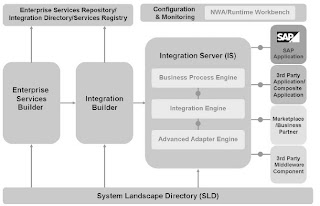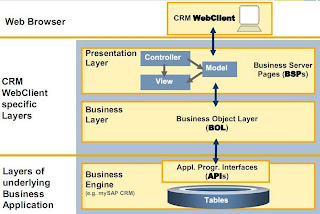Business Processes work hand in hand across a distributed systems requires process integration as it involves in data transfer uniformly. Before developing an interface we could check out for a possible existing interface if it suits our requirement and the method we choose depends on the options available at the time of development.
The purpose of SAP Netweaver Process Integration (Exchange Infrastructure) is to provide a platform that allows different interfaces to communicate with each other using a uniform technology. This promotes overall clarity and reduces maintenance effort.
Technical Implementation of a Point-To-Point Connection Sender and receiver software components are usually made by different vendors and use different technologies. The software components often provide external outbound and inbound interfaces. However, they differ in their document structure and in the protocol that the systems support.
The purpose of SAP Netweaver Process Integration (Exchange Infrastructure) is to provide a platform that allows different interfaces to communicate with each other using a uniform technology. This promotes overall clarity and reduces maintenance effort.
Technical Implementation of a Point-To-Point Connection Sender and receiver software components are usually made by different vendors and use different technologies. The software components often provide external outbound and inbound interfaces. However, they differ in their document structure and in the protocol that the systems support.
To establish the connection, you use a connector that supports both protocols and can convert a message from one protocol to another. If the document structures
are different, map the source document fields to the target document fields by using a mapping program. Some connectors provide graphical mapping tools for this purpose.
 | |||
| Architecture of Netweaver Process Integration |
Implementing Business Processes
Before we develop the interfaces you have to analyze the business process that you want to implement in a distributed system landscape. In this analysis, you have to determine which process steps you are going to implement in which system and in which software component.
we evaluate the various methods of developing the interface and then implement it. The relationship between the interface and the business process as a whole is often considered to be unimportant for the technical implementation. Usually, the documentation of the business process and the corresponding interfaces is not given high enough priority.
Before we develop the interfaces you have to analyze the business process that you want to implement in a distributed system landscape. In this analysis, you have to determine which process steps you are going to implement in which system and in which software component.
we evaluate the various methods of developing the interface and then implement it. The relationship between the interface and the business process as a whole is often considered to be unimportant for the technical implementation. Usually, the documentation of the business process and the corresponding interfaces is not given high enough priority.
The main consideration is usually how the interface works. However, if the business process is changed at a later date or a software component is exchanged or updated, this can have an effect on communication between the interfaces. In this case it is good to know how the business process and the interface are related.



